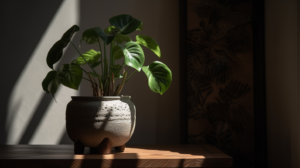Creating a Minimalist Indoor Garden
Simplicity and Serenity
A minimalist indoor garden offers an uncluttered, serene environment that fosters relaxation and peace. This gardening approach embraces simplicity, using a limited palette of plants and materials, and a well-defined layout. In this article, we’ll explore the essential elements of a minimalist indoor garden, ideal plant choices, and tips for incorporating greenery into your minimalist decor.
Understanding Minimalist Indoor Garden Design
A minimalist indoor garden focuses on clean lines, open spaces, and a sense of harmony. The design aims to reduce visual clutter and create a calming atmosphere by using a limited selection of plants and materials. The following elements are essential for creating a minimalist garden:
- Simple Layout: Minimalist gardens prioritize open spaces and well-defined areas. Incorporate clean lines and geometric shapes in your design.
- Minimal Plant Palette: Choose a small selection of plants, focusing on those with simple forms and colors. Limiting the variety of plants creates a cohesive and visually appealing garden.
- Neutral Colors: Select plants and materials with a neutral color palette to create a sense of tranquility and harmony.
- Functional Elements: Use functional, purposeful garden elements that serve both an aesthetic and practical purpose.
Choosing Minimalist Indoor Plants
Selecting plants that complement a minimalist style is crucial for creating a cohesive indoor garden. Here are some ideal plants for a minimalist indoor garden:
- Snake Plant (Sansevieria): With its upright, sword-like leaves, the snake plant adds a striking architectural element to any minimalist space.
- ZZ Plant (Zamioculcas zamiifolia): The glossy, dark green leaves of the ZZ plant create a clean, elegant look, perfect for a minimalist garden.
- Rubber Plant (Ficus elastica): The large, shiny leaves of the rubber plant contribute a bold, yet simple focal point to a minimalist room.
- Pothos (Epipremnum aureum): This trailing plant offers a touch of greenery without overwhelming the space. Its vines can be trained to climb or cascade, providing flexibility in design.
- Air Plants (Tillandsia): These unique, low-maintenance plants can be displayed in a variety of ways, making them ideal for minimalist gardens.
Incorporating Plants into Your Minimalist Decor
Integrating plants into your minimalist decor requires careful consideration of placement, containers, and overall design. Here are some tips for incorporating plants into your minimalist indoor garden:
- Group Plants Strategically: Group plants with similar forms, colors, and care requirements together for a cohesive look.
- Choose Minimalist Containers: Select simple, neutral-colored containers that complement your minimalist aesthetic. Avoid overly ornate or busy designs.
- Use Clean Lines and Geometric Shapes: Arrange plants in straight lines or geometric patterns to maintain the minimalist look.
- Maximize Natural Light: Place plants near windows or supplement with artificial lighting to ensure they receive adequate light for healthy growth.
- Embrace Negative Space: Leave open spaces in your garden design to create a sense of calm and balance. Resist the urge to overcrowd your space with too many plants.
- Maintain Your Garden: Regularly prune, clean, and care for your plants to keep them looking their best and maintain the minimalist aesthetic.
Recommended Products for Minimalist Indoor Gardens
Here are some popular products that can help you create a beautiful minimalist indoor garden:
- White Ceramic Planters: These simple, elegant planters will complement your minimalist decor and provide a clean, modern look.
- Minimalist Plant Stands: Display your plants on sleek, modern plant stands to elevate their appearance and create visual interest.
- Wall-mounted Plant Holders: Utilize wall-mounted plant holders to save floor space and create a unique, minimalist plant display.
- LED Grow Lights: Ensure your plants receive adequate light by using energy-efficient LED grow lights, which can be seamlessly integrated into your minimalist decor.
In conclusion, creating a minimalist indoor garden is an excellent way to enjoy the beauty of nature while maintaining a clean, uncluttered, and tranquil living space. By selecting the right plants, focusing on simple and cohesive design elements, and maintaining your garden regularly, you can create a minimalist indoor garden that is both functional and aesthetically pleasing. Remember to embrace negative space, use appropriate containers and plant stands, and consider incorporating wall-mounted plant holders or LED grow lights to enhance your minimalist garden design. With careful planning and attention to detail, you can create a stunning minimalist indoor garden that complements your home’s interior and provides a peaceful oasis for relaxation and contemplation.
Minimalist Indoor Gardens FAQs
1. Do minimalist indoor gardens require less maintenance?
2. Can I mix different plant types in a minimalist garden?
3. Are minimalist gardens only suitable for small spaces?
4. Can I use colorful plants in a minimalist garden?
5. Can I incorporate water features or sculptures in my minimalist garden?
Related Articles


